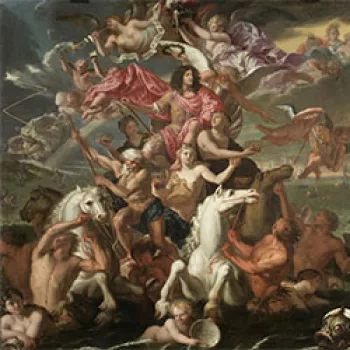Cabinet stand, later adapted to a table 1670-80
Gessoed oak, painted and silvered, with a later Portor marble top | 71.5 x 99.0 x 67.5 cm (whole object) | RCIN 27937
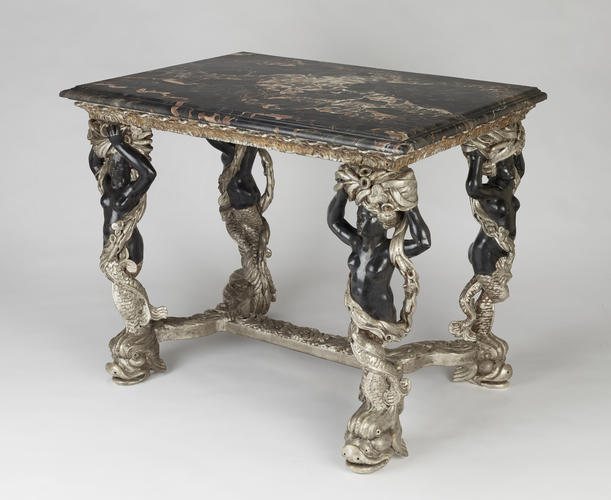

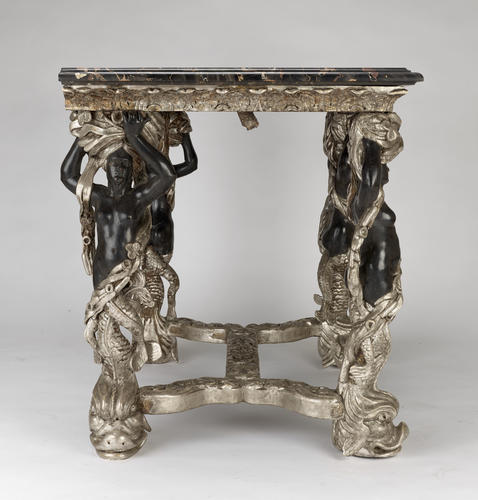
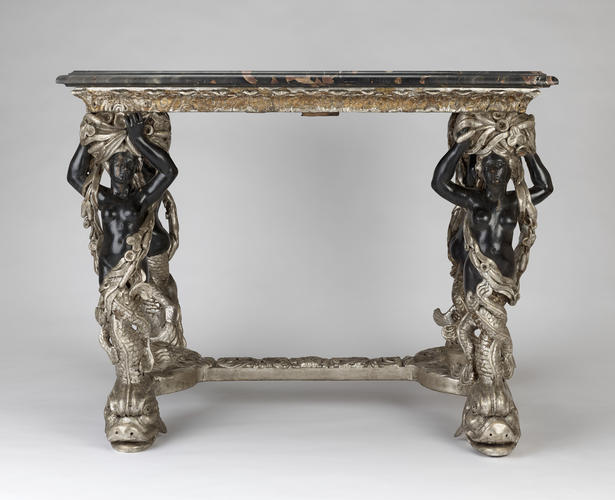
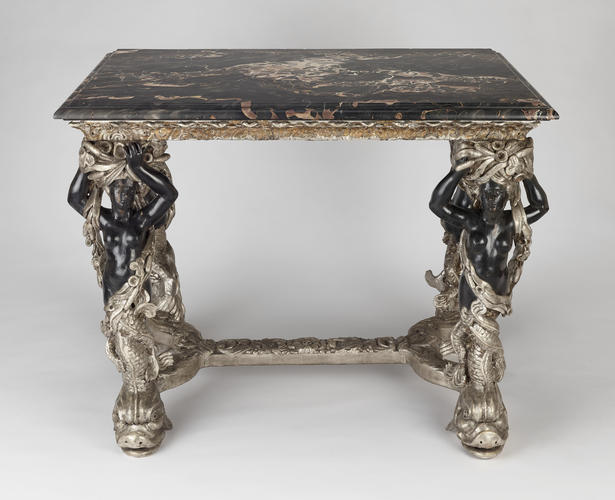




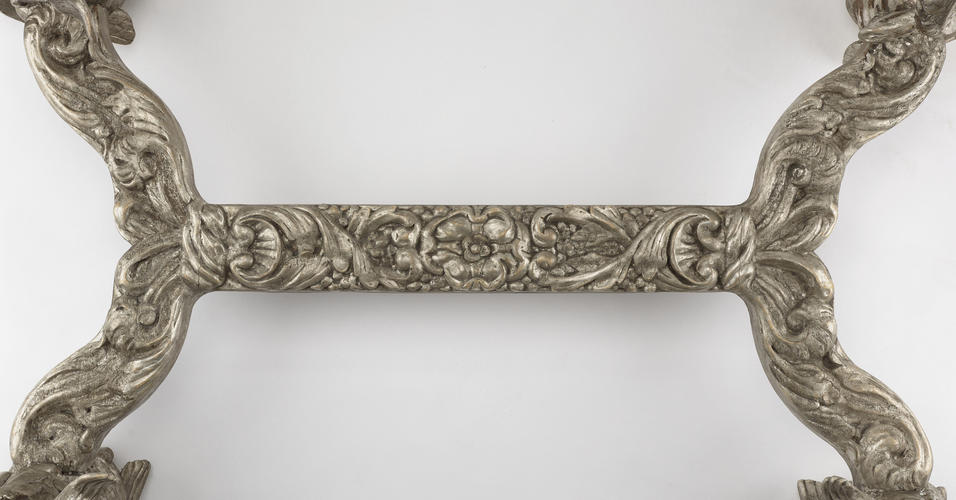
-
Rectangular marble topped table of pine in part silvered and blackened. Legs in form of mermaid figures with bunches of seaweed on their heads extending in garlands round their bodies. Feet carved as dolphin heads and linked by serpentine H-stretcher.
This table probably originated as a stand for a lacquer cabinet. Imported from China and Japan, cabinets were adapted to suit European tastes by the addition of carved stands that elevated them above the floor to create an imposing centrepiece for an important room. This example is elaborately carved, gessoed and silvered with a layer of yellow varnish applied over the top to give the silver leaf the appearance of gilding. The legs are formed with the figures of melusines, twin-tailed mermaids that have been carved in the round and painted black. The swags that wrap round their bodies, which emerge from the bundles on their turbans, are carved in the form of seaweed with octopus suckers interspersed with watery vegetation. The stand's feet are carved in the form of dolphin heads, a feature found in combination with figural supports on tables designed by the French goldsmith, Claude Ballin (1615–78) and on a set of seat furniture made in c.1685–92 for Catherine of Braganza and attributed to the English carver and joiner, Thomas Roberts. The stand originally had carved aprons on the front and sides that are now lost.The early history of this stand is uncertain and there are no references to it in the accounts of the Great Wardrobe. It is possible that it was made for Charles II as part of the extensive works carried out at Windsor, Whitehall and Holyrood during the 1670s and 80s. Alternatively, the table may have been made for William Douglas-Hamilton, Duke of Hamilton (1634–94) hereditary Keeper of the Palace of Holyroodhouse and who had an impressive suite of apartments there. The stand is known to have been at Holyrood since 1861, by which time it had been converted into a table, but may have been part of a much earlier furnishing scheme. The inventories of Hamilton's apartment record several cabinets on stands, although none appear to be a match for this example.
The authorship of the stand is also not known. Although the influence of contemporary French design is clear, the craftsman may have been an Englishman or a Frenchman working in England. If the stand is English, one possible candidate is the carver Henry Phillips, who held the position of King's Master Sculptor and Carver in Wood in 1661 until his death in 1693. Although better known for his architectural carvings, Phillips did occasionally supply furniture for the palaces. In 1663, for example, he provided a pair of 'extraordinary carved stands' for Whitehall Palace that were gilded by Philip Bromfield.
Text adapted from Charles II: Art and Power (2017).
Provenance
Possibly the 3rd Duke of Hamilton; first recorded at the Palace of Holyroodhouse, 1861.
-
-
Medium and techniques
Gessoed oak, painted and silvered, with a later Portor marble top
Measurements
71.5 x 99.0 x 67.5 cm (whole object)
Category
Object type(s)




